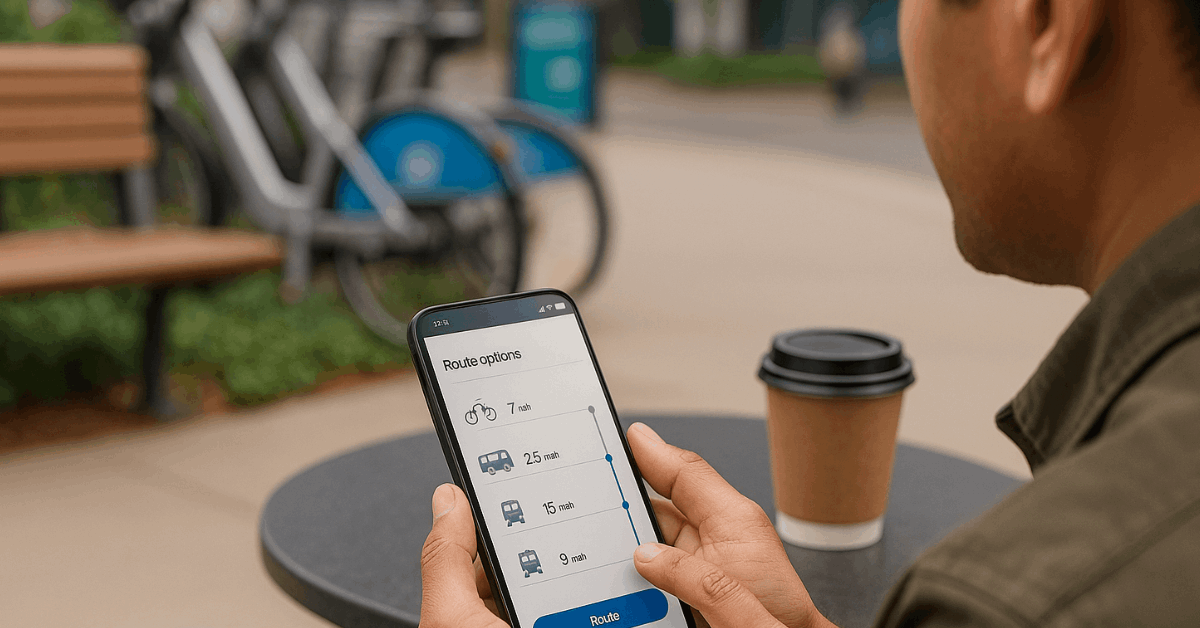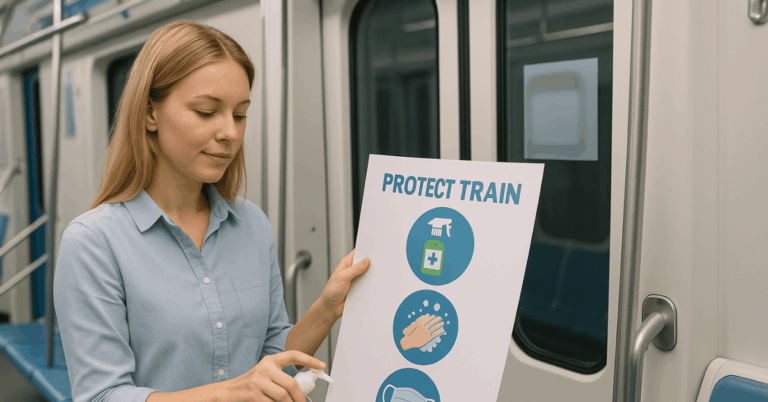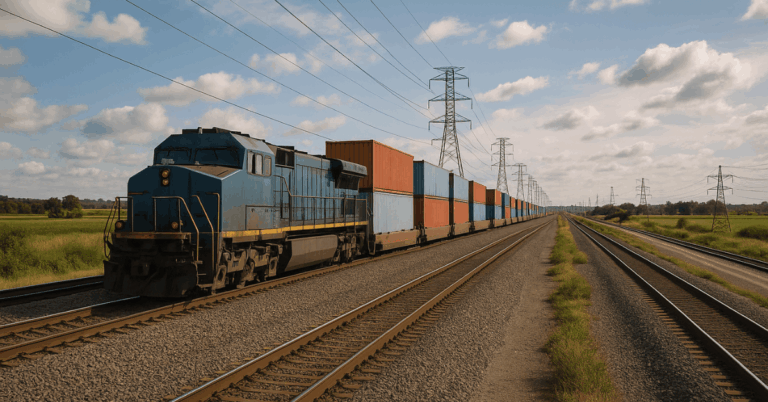Reliable options beyond fixed bus and rail now determine how well suburbs compete for residents and jobs. Additional Services for Suburban Commuters include on-demand vans, shared rides, bike share, and targeted shuttles that connect scattered neighborhoods to mainlines without long waits.
Regional plans in North America recommend affordable, on-demand service, often called microtransit, linked to buses and rail through coordinated operations, pricing, and data.
Technology and smart regulation make the model both practical and measurable at suburban scale.

Why Suburban Transit Needs a Boost
Suburbs were built for driving, which scatters destinations and thins demand across the map. Running frequent fixed routes everywhere becomes financially unrealistic, so many households default to cars for nearly every errand.
Congested arterials, high car costs for low-income workers, and poor late-night options all follow, especially where stations lack parking or local feeder links.
Regional planning guidance highlights these constraints and points to technology-supported services as the most pragmatic bridge between low-density homes and high-capacity transit.
What Counts as Additional Services for Suburban Commuters
Think of a toolkit rather than a single product. Microtransit describes smaller vehicles on dynamic routes and schedules that pool riders headed in the same direction.
Contracted or publicly run shuttles can target hospitals, malls, or industrial parks with precise hours that match shifts.
Platforms can bundle modes into one trip, pairing bikes, walking, and shared rides with bus or rail under a unified plan. Research from planning and transit organizations positions these services as complements, not replacements, for corridors where fixed lines remain essential
How On-Demand Complements Buses and Rail
Expect flexible services to make the trunk network stronger, not weaker. The bullets below summarize practical roles in a suburban setting.
- Integration with fixed routes: Schedule and geofence feeders to rail and main bus lines so transfers stay short and predictable.
- Enable first and last mile connectivity: Target catchments beyond easy walking distance and serve cul-de-sacs or office parks without redesigning entire routes.
- Expand off-peak coverage: Run late-night and weekend trips for retail, healthcare, and logistics workers when fixed frequencies drop.
- Lower operating costs per rider: Use algorithms, right-sized vehicles, and pooled rides to reduce empty miles relative to low-ridership fixed loops.
- Prepare for automation: Pilot safe operations policies now so future driver-assist or autonomous fleets can cut costs responsibly when technology matures.
Policy Toolkit That Makes the Model Work
Clear rules and contracts keep public goals front and center. Set service metrics, align incentives, and protect affordability and labor while leaving room for innovation. Anchor the program around access to jobs, schools, and healthcare, then measure reliability, wait time, and equity outcomes continuously.
Integrate Microtransit With Fixed Routes
Coordinate timetables, data sharing, and stop locations so rides connect cleanly to trunk lines. Require operators to honor transfer windows and publish real-time vehicle locations through common feeds to reduce perceived wait times.
Use Performance-Based Contracting
Tie payments to on-time performance, pooled-trip share, riders served in equity zones, and customer satisfaction. Transit industry guidance shows contracted service can help when incentives map tightly to public goals and oversight remains strong.
Build Mobility-as-a-Service integration
Bundle trip planning, booking, and support into one app or account across modes. Require open APIs, consistent service areas, and clear service-animal and accessibility policies so trips involving multiple providers stay seamless.
Standardize Unified Fare Payment
Offer fare capping, transfers, and discounts across feeders and trunks, regardless of operator. Integrated payments reduce friction for occasional riders and support transparent subsidy design.
Codify Equity and Accessibility
Target coverage and frequency in neighborhoods with low car ownership and higher disability rates. Set wheelchair-accessible fleet requirements and response-time standards equal to or better than local fixed routes.
Funding and Cost Control
Direct scarce capital toward service rather than asphalt where feasible. When parking demand near stations outstrips supply, compare the full life-cycle cost of new garages with per-trip subsidies that replace daily parking.
Several suburbs tested exactly this math and found rider subsidies far cheaper than new structured parking, especially when value-capture from station-area redevelopment enters the equation.
Case Snapshot: Summit, New Jersey
Summit analyzed a multi-million-dollar garage and instead piloted subsidized rides to the NJ Transit station.
Early phases charged eligible passholders a low flat fare (for example, $2 per ride) while the city covered the balance within defined limits and zones.
Public notices and news reports document a 2016–2017 launch period and subsequent refinements that used Uber and Lyft pickups at defined station waypoints, with caps to control fiscal exposure. The approach tested a cheaper alternative to expanding parking while preserving commuter access.
Inclusive Access and Paratransit Modernization
ADA complementary paratransit must mirror fixed-route hours and service areas, generally within ¾ mile, and fares cannot exceed double the fixed-route fare. Many systems still rely on advance booking and offer limited same-day capacity, which constrains employment and medical trips.
Pairing contracted on-demand capacity with strict ADA standards can improve reliability and reduce denials without shifting costs to riders or eroding mandated service.
Reference documents from federal programs and technical toolkits outline eligibility, visitor policies, and pricing guardrails that agencies must meet.
Land Use: Redevelop Station Parking Lots
Surface parking around commuter rail stations often occupies valuable land that could support homes, jobs, and local services.
Regional analysis in the New York–New Jersey–Connecticut area estimated thousands of acres of parking that could be reconfigured, enabling hundreds of thousands of housing units near transit while preserving pickup and drop-off zones.
Revenues from redevelopment can backstop operating subsidies for feeders and reduce total car trips into station areas over time.
Managing Risks Without Losing Momentum
Technology can generate extra vehicle miles if pricing and land-use rules lag behind. Guard against induced demand and edge sprawl by pairing suburban service expansions with parking reform, curb management, and infill zoning near stations.
Maintain rigorous data access clauses to audit performance and protect privacy, and avoid single-vendor lock-in through open standards.
Keep labor protections visible inside procurements to prevent a race to the bottom that undermines reliability and safety. Regional plans stress adopting innovation while staying alert to these pitfalls.
Additional Services for Suburban Commuters
Step-by-Step Action Plan for Local Agencies
A concise sequence helps suburban leaders move from concept to operations while minimizing risk.
- Define corridors and outcomes: Map target stations, job centers, and equity zones, then set measurable KPIs for wait time, reliability, and cost per rider.
- Select service models and contracts: Choose fixed-schedule shuttles for predictable peaks and on-demand transit for variable demand, then align performance pay to public goals.
- Deploy microtransit services where density is low: Right-size vehicles, enforce pooling goals, and require real-time data via open feeds.
- Pilot autonomous shuttle pilots in controlled environments: Focus on short, geofenced loops near campuses or hospitals under strict safety management and transparent reporting.
- Integrate fares and information: Launch unified fare payment and Mobility-as-a-Service integration so riders plan, book, and transfer within one account.
What Success Looks Like
Effective programs cut access times to rail, flatten peak parking demand, and raise evening service availability without ballooning budgets. Equity metrics should show shorter waits and higher availability in low-income and low-car neighborhoods.
Healthcare, retail, airport, and logistics workers benefit directly when late-night trips become reliable and safe across suburban jurisdictions.
Regional planning sources anticipate lower costs per trip over time as automation matures, provided public agencies maintain oversight and align incentives carefully.
Conclusion
Suburban mobility improves fastest when leaders treat flexible services as a precise instrument, not a silver bullet. Plan around fixed routes, then layer targeted feeders, shared rides, and station-area redevelopment to unlock coverage without runaway costs.
Maintain strong contracts, transparent data, and inclusive standards so service quality rises where traditional buses struggle to scale. Adopt the blended model deliberately and measure what matters: wait times, transfer reliability, affordability, and access to jobs and healthcare.
Communities that move early on Additional Services for Suburban Commuters will protect household budgets, reclaim land for housing and commerce, and build safer late-night options that reflect real suburban travel patterns.











